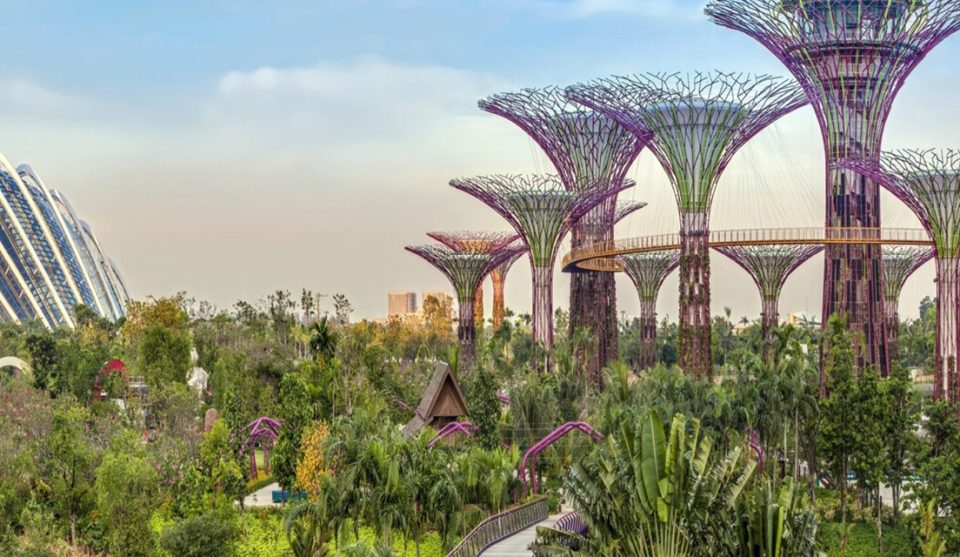In the humid embrace of Singapore’s tropical nights, dryers hum their electric lullabies in thousands of homes, each cycle spinning a thread into a larger tapestry of environmental consequence. These machines, born of convenience and necessity, have become unlikely protagonists in a story that extends far beyond the laundry room, a story of climate, energy, and the hidden costs of modern comfort.
The Weight of Water in the Air
Singapore carries its humidity like a second skin. “Singapore’s humidity is a constant companion, with levels often hovering above 80%,” creating an atmospheric pressure that transforms simple domestic tasks into endurance tests. In this perpetual moisture, clothes cling stubbornly to dampness, and the ancient practice of air-drying becomes a negotiation with nature itself.
Here, where “high humidity, frequent rain, and year-round warmth mean clothes get dirty faster,” families find themselves caught between the rhythms of tropical weather and the demands of contemporary life. The monsoon season arrives with its calendar of inconvenience, turning laundry into an exercise in timing and hope. Windows fog with condensation, and fabric refuses to surrender its moisture to air already saturated with invisible water.
This is where tumble dryers enter the narrative, not as luxury, but as salvation from Singapore’s relentless climate. Yet each press of the start button initiates a transaction with forces larger than any household understands.
The Hidden Arithmetic of Convenience
Behind the warm tumble of clothes lies sobering environmental mathematics:
• Lifetime costs: “A 5000w dryer alone can use up to 7800 kilowatt-hours of energy in its lifetime (approximately 5 years). That’s going to set you back a whopping $1,528”
• Carbon footprint: “For a typical 40°C wash, nearly 75% of the carbon footprint is due to drying”
• Power consumption: “Electric dryers use quite a bit of electricity, and usually use between 4,000W to 6,000W of power”
• Grid impact: Each neighbourhood’s evening chorus of tumbling drums represents thousands of watts flowing through Singapore’s electrical infrastructure
These figures represent more than monetary cost; they map the environmental footprint of millions of loads, each contributing to the island nation’s expanding energy demands.
The Cultural Divide of Drying
Singapore stands at a cultural crossroads of laundry practices. “Air drying clothes is very common in Singapore. While clothes dryers are very common in Europe and the US, they’re rarer to find in Singapore,” creating tension between traditional methods and modern convenience.
The choice between methods carries significant implications:
• Energy impact: Air-drying requires zero electricity but demands time and space
• Climate resilience: Clothes dryers offer weather independence but increase environmental burden
• Economic pressure: “Electric dryers are generally less efficient than gas dryers”
• Social equity: Access to private drying space becomes a marker of housing privilege
For many families, the decision crystallises during rainy seasons, when “mould and mildew thrive in this moisture, shortening the lifespan of fabrics and ruining our clothes.”
The Innovation Response
Against environmental pressure, alternative technologies emerge, offering potential liberation:
• Solar-powered systems: Achieve drying “9 times more energy efficient than a conventional dryer”
• Energy consumption: “The Solar function is rated at only 0.72 kWh”
• Natural heat utilisation: Harness Singapore’s abundant solar radiation to solve the drying challenge
• Adoption barriers: Installation costs, space requirements, and established routine inertia
These solutions work with, rather than against, Singapore’s climate, yet the gap between environmental necessity and practical implementation reveals the complex negotiations required for meaningful change.
Climate Futures and Household Choices
Singapore’s climate projections paint an intensifying picture ahead. Rising temperatures and increasing weather variability suggest humidity challenges will only worsen, creating a feedback loop: climate change drives increased reliance on energy-intensive appliances, which contribute to emissions, driving further climate change.
Families become unwitting participants in systems larger than their individual choices. As energy costs rise, wealthier households can invest in efficient appliances while lower-income families remain trapped with energy-hungry machines or forced to navigate traditional drying methods in increasingly challenging weather.
Toward Sustainable Rhythms
The path forward requires coordinated action across multiple levels:
• Individual choices: Select energy-efficient models, optimise load sizes, maintain equipment for peak performance
• Smart technology: Time dryer usage to renewable energy availability periods
• Building design: Integrate effective natural ventilation and drying spaces
• Policy support: Incentivise efficient appliances while supporting alternative household solutions
Singapore’s sustainability commitment suggests potential for coordinating household needs with environmental goals through these integrated approaches.
The Larger Story
Each family’s laundry routine connects to questions that extend far beyond the domestic sphere: How do we balance comfort with environmental responsibility? What do we owe future generations when making daily choices about energy use?
The answers emerge from collective recognition that domestic choices participate in larger environmental systems. The humid air that challenges laundry also supports Singapore’s biodiversity. The energy powering our appliances connects to renewable resources and climate commitments.
In Singapore’s laundry rooms, families navigate between immediate comfort and long-term consequences. The decisions feel small, load by load, cycle by cycle, yet accumulate into the larger story of how societies adapt to environmental challenges while maintaining dignity and comfort.
As Singapore’s residents reach for their laundry each morning, the choice between natural air and electric heat becomes a small but significant act of environmental citizenship. The future of sustainable living may well be written in these quotidian choices, as ordinary families discover that their most routine decisions connect them to the extraordinary challenge of preserving a liveable planet, one cycle of dryers at a time.

